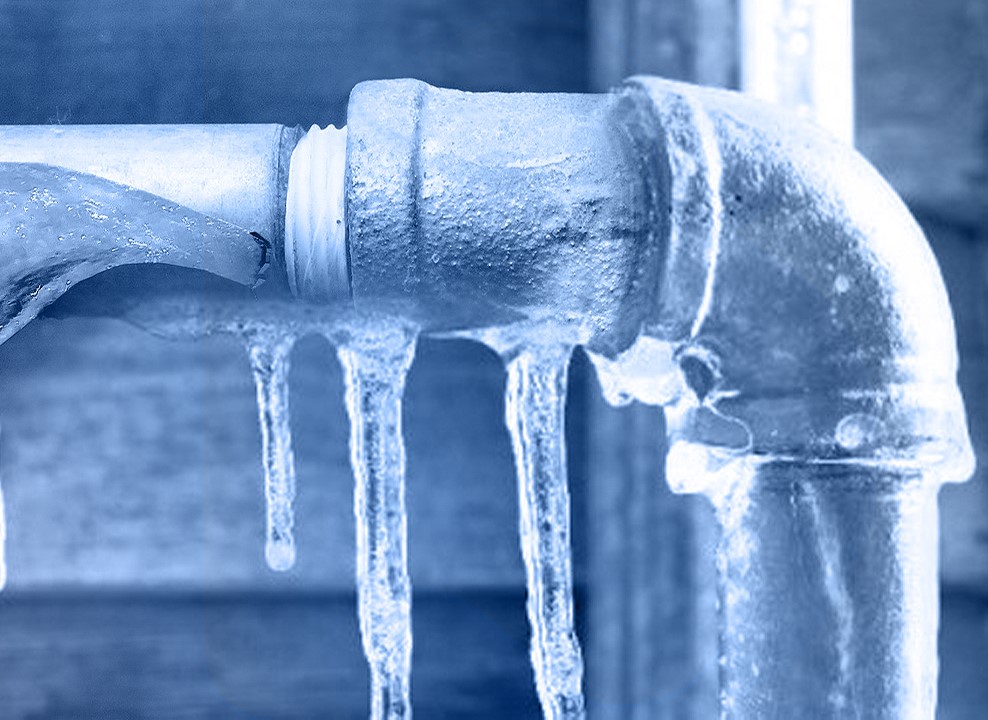Crucial Advice to Prevent Frozen Pipes in Cold Weather
Crucial Advice to Prevent Frozen Pipes in Cold Weather
Blog Article
This great article in the next paragraphs on the subject of Prevent Frozen Pipes is exceptionally fascinating. Read it yourself and see what you think of it.

Cold weather can wreak havoc on your plumbing, particularly by freezing pipes. Below's just how to prevent it from happening and what to do if it does.
Introduction
As temperatures decrease, the danger of frozen pipes increases, possibly bring about costly fixings and water damages. Comprehending exactly how to prevent icy pipelines is vital for property owners in cold climates.
Recognizing Frozen Pipes
What causes pipelines to freeze?
Pipelines freeze when revealed to temperatures below 32 ° F (0 ° C) for extended periods. As water inside the pipes freezes, it broadens, taxing the pipe wall surfaces and possibly triggering them to break.
Dangers and problems
Frozen pipelines can lead to water disruptions, property damages, and pricey repair services. Burst pipelines can flooding homes and cause extensive structural damages.
Signs of Frozen Pipes
Recognizing icy pipelines early can avoid them from rupturing.
Exactly how to determine frozen pipes
Search for decreased water flow from taps, uncommon odors or noises from pipelines, and noticeable frost on exposed pipes.
Avoidance Tips
Protecting vulnerable pipelines
Cover pipes in insulation sleeves or make use of warmth tape to protect them from freezing temperature levels. Focus on pipes in unheated or external areas of the home.
Home heating techniques
Maintain interior areas effectively heated, particularly areas with plumbing. Open up cabinet doors to enable warm air to circulate around pipes under sinks.
Protecting Outside Pipes
Garden hose pipes and outdoor faucets
Separate and drain garden hose pipes before winter season. Install frost-proof spigots or cover outside faucets with insulated caps.
What to Do If Your Pipes Freeze
Immediate activities to take
If you believe icy pipes, keep faucets open up to alleviate stress as the ice thaws. Utilize a hairdryer or towels soaked in hot water to thaw pipelines slowly.
Long-Term Solutions
Structural changes
Think about rerouting pipes far from exterior wall surfaces or unheated areas. Include additional insulation to attic rooms, basements, and crawl spaces.
Updating insulation
Purchase high-quality insulation for pipes, attic rooms, and walls. Correct insulation helps preserve regular temperatures and minimizes the threat of frozen pipes.
Final thought
Preventing frozen pipes calls for aggressive steps and quick feedbacks. By understanding the causes, indicators, and preventive measures, homeowners can safeguard their pipes throughout winter.
6 Proven Ways to Prevent Frozen Pipes and Protect Your Home
Disconnect and Drain Garden Hoses
Before winter arrives, start by disconnecting your garden hoses and draining any remaining water. Close the shut-off valves that supply outdoor hose bibs and leave the outdoor faucet open to allow any residual water to drain. For extra protection, consider using faucet covers throughout the colder months. It’s also important to drain water from any sprinkler supply lines following the manufacturer’s directions.
Insulate Exposed Pipes
Insulating your pipes is an effective way to prevent freezing. Pipe insulation is readily available at home improvement stores and is relatively inexpensive. Pay close attention to pipes in unheated areas such as the attic, basement, crawl spaces, or garage. Apply foam insulation generously to create a buffer against the cold. You can also wrap your pipes in heat tape or thermostat-controlled heat cables for added warmth.
Seal Air Leaks
Inspect your home for any cracks or openings that could let in cold air. Seal any holes around the piping in interior or exterior walls, as well as the sill plates where your home rests on its foundation. Additionally, make sure to keep your garage door closed unless you’re entering or exiting. Leaving it open creates a significant air leak that can lead to frozen pipes.
Allow Warm Air Circulation
During cold snaps, it’s essential to allow warm air to circulate evenly throughout your home. Leave interior doors ajar to promote better airflow. Open kitchen and bathroom cabinets to help distribute heat consistently around the rooms. If you have small children or pets, be sure to remove any household chemicals or potentially harmful cleaners from open cabinets for safety.
Let Faucets Drip
A small trickle of water can make a big difference in preventing ice formation inside your pipes. When temperatures drop significantly, start a drip of water from all faucets served by exposed pipes. This continuous flow helps prevent the water from freezing. Additionally, running a few faucets slightly can relieve pressure inside the pipes, reducing the chances of a rupture if the water inside does freeze.
https://choateshvac.com/6-proven-ways-to-prevent-frozen-pipes-and-protect-your-home/

As a fervent person who reads on How to prepare your home plumbing for winter weather, I think sharing that short article was worthwhile. Do you know someone else who is truly interested in the niche? Take a moment to promote it. I truly appreciate reading our article about Helpful Tips to Prevent Frozen Pipes this Winter.
At This Website Report this page